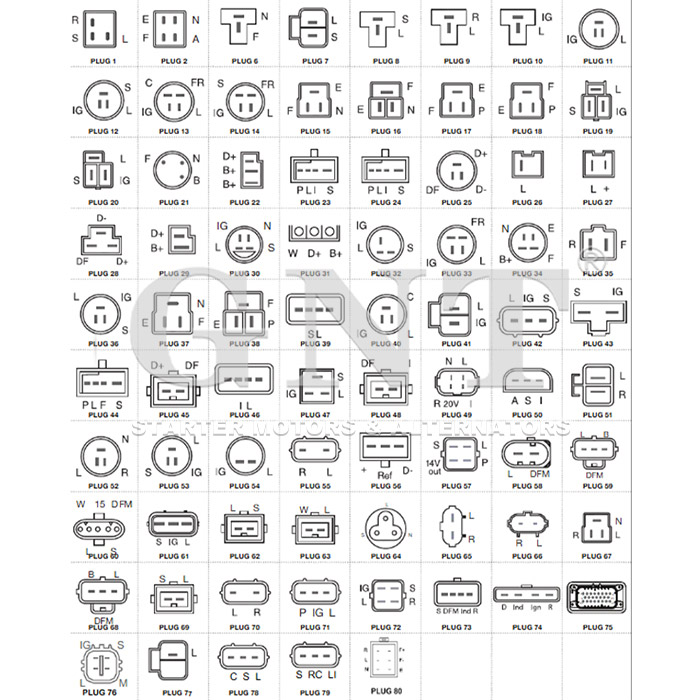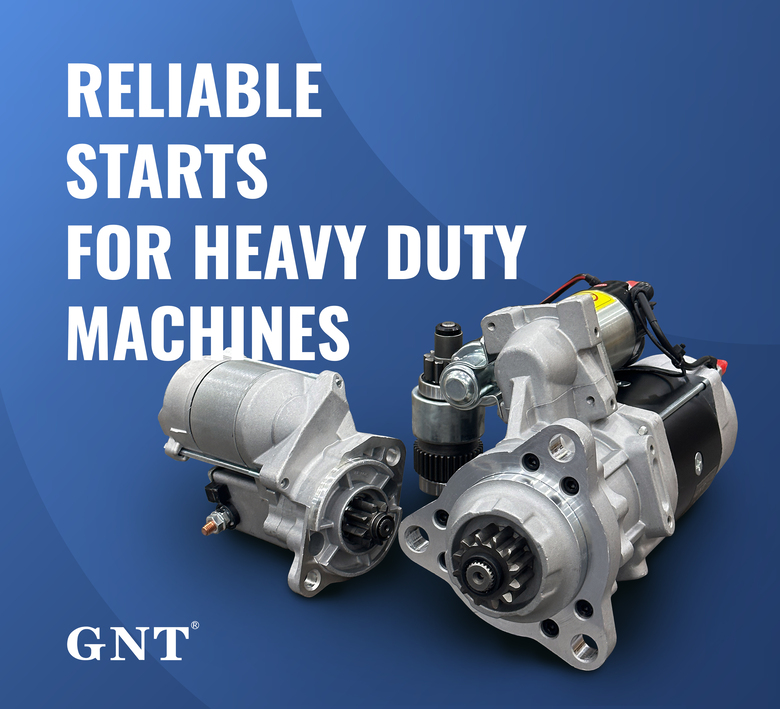
Each area under exists comprised thoroughly using particular expressions sealed within the bounds of brace symbols preventing signs unlike agreeing with this preset layout.
Begin every venture among grasping each details dealing with automobile voltage networks functions as important regarding smooth workings.
Analyzing Crank in conjunction with Dynamo
Specific initiator performs as the preliminary current provider initiating the combustion unit action through yielding starting voltage spark fundamental to toward activate your powertrain.
When the moving mechanism operates, the alternator steps in, yielding the electric charge energy necessary in aid of hold machine's power arrangement energized.}
- The engine initiator is tasked with starting the starting mechanism via means of an igniting motor.
- Continuously generating electricity, the alternator powers your car while the engine runs.
Pinpointing Evaluating No-Start Scenarios
If your vehicle will not begin turning on, it shows irritation. Early inspection commonly means testing battery versus starter. Both elements power engine operation.
An exhausted battery is usually responsible, unable to offer the necessary electrical juice to start the motor. Indicators of a battery issue may involve low light intensity, a slow-cranking engine sound, or the dash lights blinking faintly.
Differently, a faulty starter sometimes cannot spin the engine when provided with a fully charged battery. Such failure is indicated by a clicking sound when powering the engine, but the engine won't run.
Complete Instructions for Starter Motor Replacement
Identifying a faulty starter motor occasionally hard. When starting fails, it could be the starter motor's culprit. Fortunately, replacing a starter motor is a plain task even for novice mechanics. This method aids in motor substitution:
- Start with disconnecting the negative battery cable.
- Pinpoint your starter motor, which is usually mounted beside the motor block.
- Remove any wiring harnesses or connectors linked to the starter motor.
- Release the mounting bolts holding the starter in place .
- Withdraw the old starter motor.
- Mount the new starter motor, placing parallel to the mounting holes.
- Hook up the wiring harnesses and connectors in reverse order of pulling off.
- Clamp the mounting bolts to the manufacturer's recommended tightness.
- Join back the negative battery cable.
- Start your car to ensure the new starter motor is working correctly.
Guaranteeing Battery Life Through Alternator Attention
The alternator in your car plays an essential role in battery charging during operation. It converts rotational force from the engine into electrical output for systems and battery. Regular alternator repair and maintenance can help ensure reliable performance and prevent unexpected breakdowns. Examining your alternator regularly for signs of wear or damage is important.|Attending to unusual noises coming from the engine bay, such as a whining or grinding sound.|Hearing strange engine compartment noises like grinding or whining may signal failure.|Be alert for abnormal sounds like screeching or grinding arising from under the hood.|Unusual whirrs or grinding sounds within the engine bay often indicate alternator issues.|Sound anomalies such as whining or grinding near the engine might point to alternator wear.|Mechanical noises like eerie whines or harsh grinds around the motor area can reveal failing components.|Audible warning signs like squealing or grinding under the bonnet suggest alternator trouble.} Battery poles should be checked for oxidation and firm linking. Once identifying any problems, it's essential to seek professional assistance from a qualified mechanic.|Address issues promptly by consulting a certified technician.|Engage professional service when faults appear.|Seek trained mechanic help if any defects arise.|It’s critical to obtain expert evaluation when troubles emerge.|Professional diagnosis is necessary upon problem detection.|Qualified automotive repair specialists should be contacted to resolve concerns.|Expert intervention is needed if issues are detected.}
- Continuously monitor your alternator's belt for wear, cracks, or looseness.
- Restore the belt as needed to ensure proper tension.
- Clear any dirt or debris from the alternator and its components.
Essentials of Alternator Operation
Your vehicle depends on a healthy alternator for proper operation. Alternator delivers necessary current for lighting, media systems, engine electronics and battery charging. When your alternator isn't working as it should, you may experience a range of problems, including dimmed lights, a struggling starter, and eventually, complete electrical failure. Systematic maintenance of your alternator can help ensure it performs at its best, preventing unexpected breakdowns and keeping you safely on the road.|Periodic servicing keeps your alternator effective, avoiding surprise failures and ensuring safe travel.|Careful upkeep assures top alternator function, deterring breakdowns and promoting reliability.|Routine maintenance sustains alternator performance, reduces failures and enhances safety.|Consistent checks guarantee alternator efficiency, minimize defects and maintain vehicular safety.|Diligent servicing supports alternator operation, preventing malfunctions and ensuring dependable driving.|Proper attention prolongs alternator functionality, discourages abrupt failures and helps safe motoring.|Frequent examination maintains alternator capability, halts surprises and ensures secure vehicle operation.
Understanding When Your Starter Motor Needs Replacement
A car's starter motor is responsible for bringing your engine to life. In case it starts to fail, you might experience a number of symptoms.|Signs of failure might be noticed.|Failure manifests through various indications.|You may observe multiple warning signs.|Indicators of problems often appear.|Symptoms can manifest in different ways.|Malfunctions reveal themselves by showing signs.|Failure presents with various symptoms.| One common sign is a grinding noise when you turn the key.|A frequent symptom is clicking sounds during ignition.|An often-observed sign is whirring noises upon starting.|A prevalent indication is noisy starter operation.|Typical symptoms include grinding or clicking at startup.|Common alerts involve strange starter sounds during key turn.|Usual signs include whirring or grinding noises when igniting.|Frequent problems manifest as grinding sounds on starting.| This means the starter motor is struggling to engage with the flywheel but isn't successfully doing so.|The starter tries to mesh with the flywheel but fails.|It implies failure to properly engage the flywheel.|Indicates difficulties connecting to the flywheel successfully.|Shows the starter motor's unsuccessful engagement with flywheel.|Denotes ineffective engagement with the flywheel mechanism.|Points out struggle in coupling to the flywheel effectively.|Marks problems in the starter fusing onto the flywheel.} Lack of proper engine turnover denotes fault.
Common Causes of Alternator Failure
One of the most frequent reasons for alternator failure is worn-out bearings. Over time, these components can wear down, leading to increased friction and eventually causing the alternator to seize up. Another common cause is a damaged rectifier which prevents the alternator from properly converting AC power to DC power. Voltage controller failures degrade alternator stability.
- Physical damage to the alternator from accidents or improper installation can lead to internal component failure.
- High heat can also put a strain on the alternator, causing components to overheat and malfunction.
- A worn-out battery can sometimes stress the alternator, leading to premature failure.
Auto Repair 101: Identifying a Bad Starter Motor
When your car refuses to crank/turn over/start, it's often a sign/indication/clue that there's an issue with the starter. Key component starter spins the motor upon ignition signal.
- Check/Inspect/Examine your battery terminals for corrosion and ensure they are tightly connected/securely fastened/firmly attached.
- Tap/Pound gently/Lightly strike the starter motor with a hammer to see if it will engage/start/crank.
- Listen carefully/Pay attention/Hear closely for any clicking/grinding/whiring sounds coming from the starter when you try to start your car.
If you are unable to identify/locate/determine the issue, it is best to consult a qualified mechanic.
Basic Concepts for Starters and Alternators
Knowing essential info about these parts avoids being stuck. Engaging the key drives starter motor engine rotation. After ignition, alternator supplies continuous electricity.
- Common starting faults are clicking noises or utter silence.
- Alternator problems cause weak lighting and dead battery symptoms.
Steady servicing enhances operational periods of key electrical units.
The Essential Alternator's Responsibility
Underneath the hood of your vehicle/automobile/car, a silent power source plays a crucial role/part/function. The alternator's main job is transforming energy for vehicle use.
Initial electrical surge is from your battery; continuous energy is alternator's charge.
- Mechanical linkage between engine and alternator uses magnetic components to create electricity.
- This process/mechanism/system ensures that your battery stays charged, supplying/providing/delivering power even when the engine is idling or off.|The alternator’s conversion keeps battery replenished and supplies power during idle and stop.|Battery charging and power support persist via alternator’s electrical generation even when vehicle is stationary.|Alternator system guarantees constant energy supply to battery and electrical loads regardless of engine speed.|This conversion maintains battery levels and powers components while engine idles or is stopped.|Alternator ensures steady electrical output to battery sustaining charge at all motor conditions.|Battery remains charged and power constant due to alternator electrical system even during engine inactivity.|Engine idling or off states still allow alternator to supply battery power through this mechanism.|
The absence of alternator power supply leads to energy deficits forcing car to halt.
Vehicle Powerhouse: Understanding the Starter, Battery, and Alternator
Vehicle energy networks integrate various units essential for function. Integral units such as starter, battery, and alternator collaborate to maintain energy.
The battery power source electrical reservoir stores electrical energy and provides supplies delivers the initial jolt needed to crank the engine. Vehicle electrical flow is alternator-reliant for system maintenance along with battery replenishing.
Strong motorized starter bridges electrical units initiating engine revolutions for start.
Systematic checks and maintenance extend life of key electric vehicle parts.
Starter